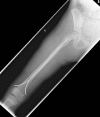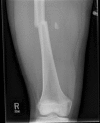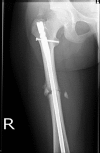The management of paediatric diaphyseal femoral fractures: a modern approach
- PMID: 27401456
- PMCID: PMC4960060
- DOI: 10.1007/s11751-016-0258-2
The management of paediatric diaphyseal femoral fractures: a modern approach
Abstract
The definitive treatment of paediatric femoral diaphyseal fractures remains controversial. Modalities of treatment vary mostly according to age, with fracture pattern and site having a lesser impact. Current evidence is reflective of this variation with most evidence cited by the American Academy of Orthopedic Surgeons being level 4 or 5. The authors present a review of the most up-to-date evidence relating to the treatment of these fractures in each age group. In an attempt to clarify the current trends, we have produced an algorithm for decision-making based on the experience from our own tertiary referral level 1 major trauma centre.
Keywords: Evidence; Femur; Fracture; Management; Paediatric; Review; Trauma.
Figures














References
-
- Harvey AR, Bowyer GW, Clarke NMP. The management of paediatric femoral shaft fractures. Curr Orthop. 2002;16(4):293–299. doi: 10.1054/cuor.2002.0254. - DOI
-
- Schwend RM, Werth C, Johnston A. Femur shaft fractures in toddlers and young children: rarely from child abuse. J Pediatr Orthop. 2000;20(4):475–481. - PubMed
-
- Wallace ME, Hoffman EB. Remodelling of angular deformity after femoral shaft fractures in children. J Bone Joint Surg Br. 1992;74(5):765–769. - PubMed
Publication types
LinkOut - more resources
Full Text Sources
Other Literature Sources

